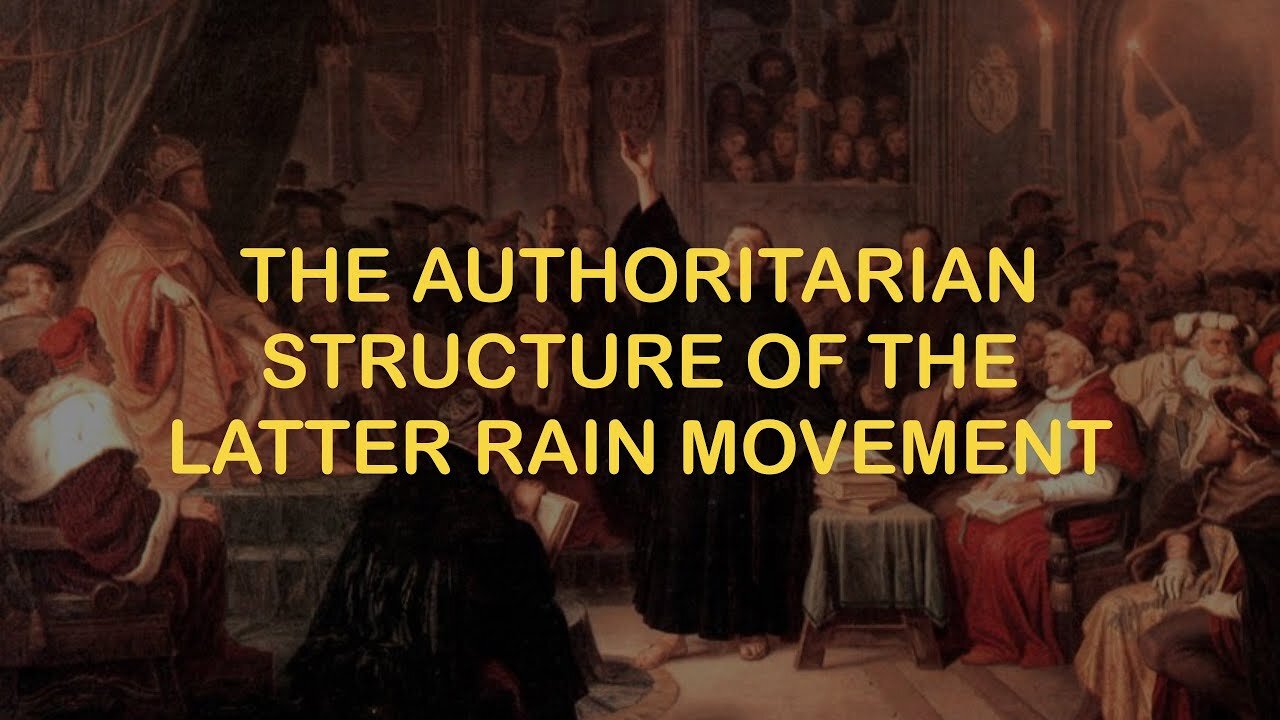Premium Only Content

The Authoritarian Structure of the Latter Rain
When Martin Luther started the Protestant Reformation in the 16th century, he and those with him opposed the authoritarian structure of the Catholic Church. They had witnessed the negative effects of that structure first-hand and realized that the biblical model for the Church was in no way similar to their own, and saw the imbalance of power as an evil that must be escaped.
Interestingly, the Latter Rain movement of the late 1940s, 1950s, and 1960s reversed the work that Martin Luther did centuries ago by restoring that same structure. With the Latter Rain’s Five-Fold Ministry doctrine, a clear path of authority was established, making miniature “Popes” of the heads of each sect that splintered from it. The church leadership in the Latter Rain did not lead by making new individual leaders to spread the Gospel; instead, they looked to Five-Fold offices for new “spoken words” “voices of god”, “logos”, and “rhemas”. Yet at the same time, those same leaders condemned the Catholic Church for this very thing.
The movement became uniquely positioned as a religious sect that condemned itself as authoritarian and unbiblical.
You can learn this and more on william-branham.org
Five-Fold Ministry:
https://william-branham.org/site/research/topics/five_fold_ministry
Latter Rain:
https://william-branham.org/site/research/topics/latter_rain
-
 8:30
8:30
William Branham Historical Research
4 days agoFunerals: Branham Cult Cruelty - The "Message" Tears Families Apart
12 -
 LIVE
LIVE
Tundra Gaming Live
5 hours agoThe Worlds Okayest War Thunder Stream//FORMER F-16 MAINTAINER//77th FS//#rumblefam
359 watching -
 LIVE
LIVE
DemolitionDx
1 hour agoSunday night COD with friends.
240 watching -
 2:10:14
2:10:14
vivafrei
11 hours agoEp. 237: More Trump Cabinet Picks! MAHA or Slap in the Face? Canada on Fire! Go Woke Go Broke & MORE
132K169 -
 LIVE
LIVE
SOLTEKGG
1 hour ago $1.63 earned🟢 First Day on RUMBLE!
232 watching -
 LIVE
LIVE
Vigilant News Network
5 hours agoCOVID-Vaccinated Hit With Grave New Reality | Media Blackout
2,649 watching -
 1:26:31
1:26:31
Josh Pate's College Football Show
5 hours ago $1.44 earnedSEC Disaster Saturday | Major CFP Earthquake Coming | Officiating Is A Disaster | New Studio Debut
9.87K -
 1:43:05
1:43:05
Adam Does Movies
8 hours ago $2.79 earnedGladiator II Spoiler Conversation With Hack The Movies
14.3K -
 24:10
24:10
Bwian
8 hours agoI Don't Know What I'm Doing in Fortnite, But I Still Won...
11.4K1 -
 19:30
19:30
DeVory Darkins
10 hours ago $37.52 earnedJoe Rogan MOCKS The View as Bill Maher HUMILIATES Woke Scientist
85.8K121